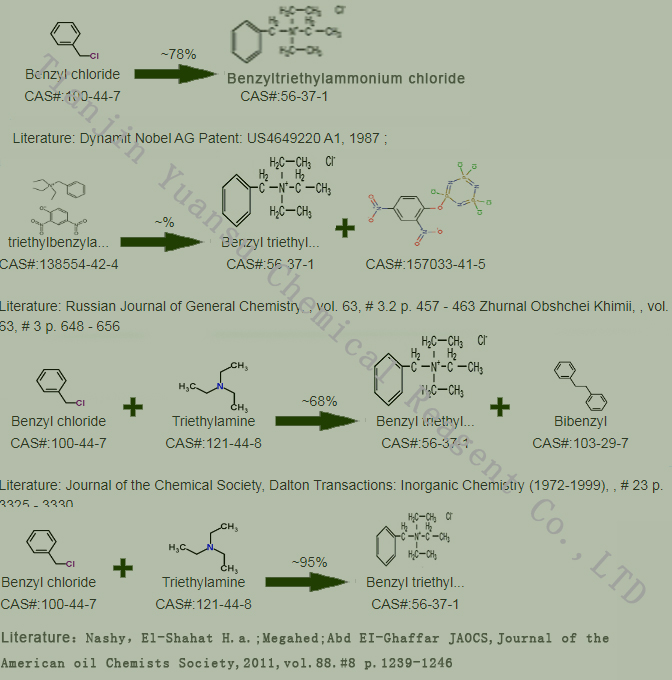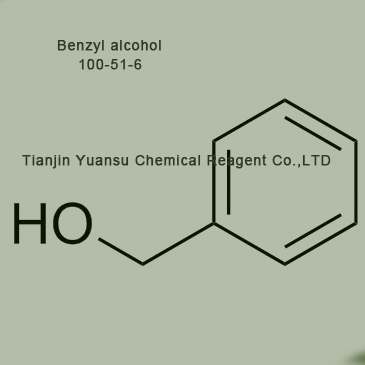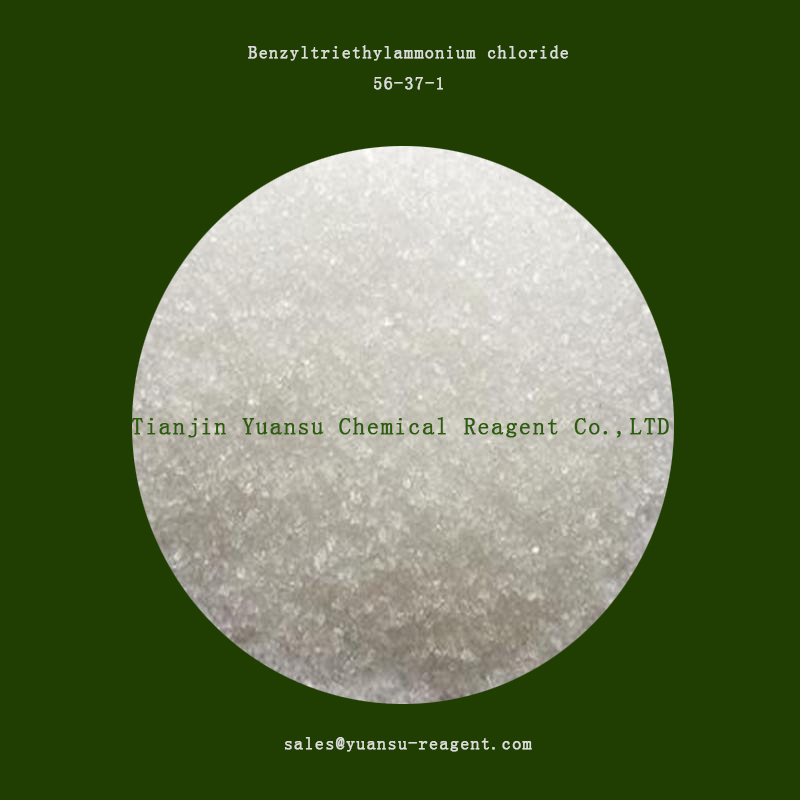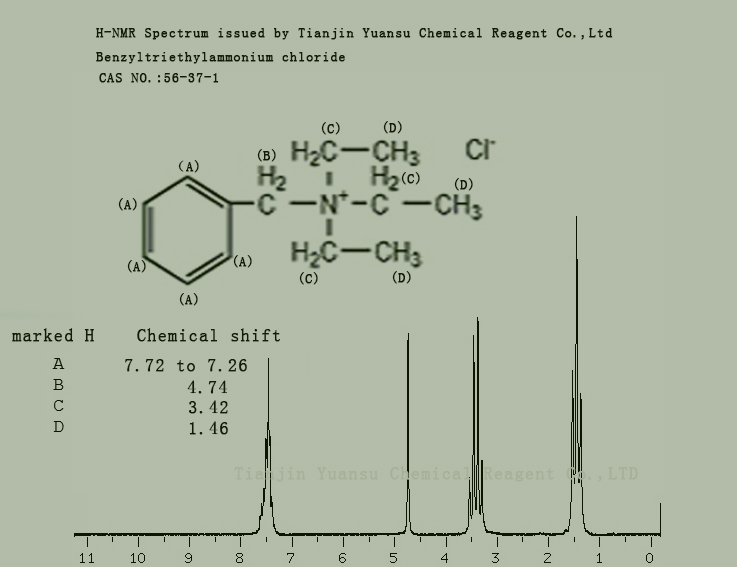Benzyltriethylammonium chloride
What is Benzyltriethylammonium chloride, cas no:56-37-1,a producer telling you the result.
CAS NO.56-37-1
If you need the products .Please send your inquiry to us through e-mail: sales@yuansu-reagent.com
To begin with, let us tell you what is the basic information of Benzyltriethylammonium chloride ?
|
Molecular Formula |
C13H22ClN |
Molecular Weight |
227.773 |
|
Density |
1.08 g/mL at 25 °C |
Exact Mass |
227.144 |
|
Flash Point |
>100°C |
Melting Point |
239 °C (dec.)(lit.) |
Like many stuff, it has many synonyms as follows
|
EINECS 200-300-3 |
|
Benzyl triethyl ammonium chloride |
|
N-Benzyl- N,N-diethylethanaminium chloride |
|
Triethylbenzylammonium chloride |
|
triethyl-benzylammonium chloride |
|
N-benzyl-N,N,N-triethylammonium chloride |
|
Benzyltriethylammoni |
|
Benzyltriethylammoniumchlorid |
|
Benzyl triethylammonium chloride |
|
TEBAC |
|
UNII-46WDQ3ADML |
|
BENZYLTRIETYLAMMONIUM CHLORIDE |
|
TEBA |
|
N-benzyl-N,N-triethylethanaminium chloride |
|
benzyltriethyl-ammoniuchloride |
|
N-b enzyltriethylammonium chloride |
First, the chemical is very special, some technical indexes as below
If you need the products .Please send your inquiry to us through e-mail: sales@yuansu-reagent.com
CAS number: 56-37-1
MDL Number: MFCD00011824
EINECS number: 200-270-1
RTECS number: BO8275000
BRN number: 3574984
PubChem Number: 24848415
Physical property data
1. Appearance: White crystal. Has hygroscopicity.
2. Density (g/mL, 25/4 ℃): not determined
3. Relative vapor density (g/mL, air=1): not determined
4. Melting point (º C): 190 ℃ (decomposition)
5. Boiling point (º C, atmospheric pressure): undetermined
6. Boiling point (º C, 5.2kPa): undetermined
7. Refractive index: undetermined
8. Flash point (º C): undetermined
9. Specific rotation (º): not determined
10. Spontaneous combustion point or ignition temperature (º C): not determined
11. Vapor pressure (kPa, 25 º C): not determined
12. Saturated vapor pressure (kPa, 60 º C): not determined
13. Combustion heat (KJ/mol): undetermined
14. Critical temperature (º C): not determined
15. Critical pressure (KPa): undetermined
16. Logarithmic value of oil-water (octanol/water) partition coefficient: undetermined
17. Explosion upper limit (%, V/V): undetermined
18. Lower explosive limit (%, V/V): not determined
19. Solubility: Easily soluble in water.
toxicology data
1. Acute toxicity: Rat oral LD50: 2219mg/kg; Mouse vein LC50: 18mg/kg
Ecological data
None
Molecular structure data
None
Calculate chemical data
1. Reference value for hydrophobic parameter calculation (XlogP): None
2. Number of hydrogen bond donors: 0
3. Number of hydrogen bond acceptors: 1
4. Number of rotatable chemical bonds: 5
6. Topological molecule polarity surface area 0
10. Number of isotopic atoms: 0
11. Determine the number of atomic stereocenters: 0
12. Uncertain number of atomic stereocenters: 0
13. Determine the number of chemical bond stereocenters: 0
14. Number of uncertain chemical bond stereocenters: 0
15. Number of covalent bond units: 2
Nature and stability
Cannot blend with anionic compounds.
Storage
This product should be sealed and stored dry.
Second, the Synthetic Route we will recommend is the most important for your reference?
First, synthesis line ofBenzyltriethylammonium chloride CAS NO.56-37-1 as follows
Synthetic method
1. Add benzyl chloride, triethylamine, and acetone to the reaction vessel and reflux at 63-64 ℃ for 8 hours. Slowly reduce to 15 ℃, filter, wash the filter cake with acetone, dry, and obtain TEBA. The yield was 68.9%. The reaction equation is as follows:
2. Place 346.5 grams of triethylamine, 413.5 grams of chlorine and ethyl acetate in 238.6 grams of
dimethylformamide (DMF) and reflux for 1 hour. Add 300 grams of benzene at 80 ℃ to precipitate the ammonium
salt. Filter by suction, wash with benzene, and vacuum dry to obtain 648 grams with a purity of 98.1%
25 grams of triethylamine and 30 grams of benzyl chloride can also be refluxed in 120 grams of dichloroethane for 2
hours to obtain 52.6 grams of product
Third, what is the usage of Benzyltriethylammonium chloride CAS NO.56-37-1 ? pleas see below
If you need the products .Please send your inquiry to us through e-mail:sales@yuansu-reagent.com
Main Usage:
1. Alkylation reaction catalyst. Phase transfer catalyst. Synthesis of multi substituted cyclopropanes through phase transfer catalysis Michael addition reaction.
2. This product is used as a fungicide.
3. Application: Phase transfer catalyst. Used in nucleophilic substitution, carbene reactions, and alkylation reactions such as C-alkylation, N-alkylation, 0-alkylation, and S-alkylation.
Other Usage:
Used for the synthesis of 5,7-ditert-butyl-1,4-benzodioxine Cas no.
Used for the synthesis of 7-methoxy-2,2-dimethyl-3H-chromen-4-one,Cas no. 20321-73-7
Used for the synthesis of benzyl alcohol Cas no. 100-51-6
Besides Safety Information ofBenzyltriethylammonium chloride CAS NO.56-37-1 is also important when handling it
|
Hazard Codes |
Xi |
|
WGK Germany |
3 |
|
H.S.Code: |
2922 2990.90 |
|
TSCA |
Yes |
|
HazardClass |
IRRITANT |
What is the appearance of Benzyltriethylammonium chloride CAS NO.56-37-1? Please see the picture ofBenzyltriethylammonium chloride CAS NO.56-37-1, below
If you need the products .Please send your inquiry to us through e-mail: sales@yuansu-reagent.com
Specification ofBenzyltriethylammonium chloride CAS NO.56-37-1, is below
Apperance: white crystal powder
Assay: 99 min by HPLC
IR identity: conform
IR picture of Benzyltriethylammonium chloride CAS NO.56-37-1 is as follows,
H-NMR Spectrum picture of Benzyltriethylammonium chloride CAS NO.56-37-1 is as follows,
Reference of Article cited for your reference below,
(1)
PMID: 21928010
Publication Date: 2011
Publication Name: Fluorous Chemistry
(2)
Publication Date: 2002
Publication Name: Fluoropolymers 1: Synthesis
(3)
Domino Reactions Triggered by Hydroformylation
PMID: 23912442
Publication Date: 2013
Publication Name: Hydroformylation for Organic Synthesis










